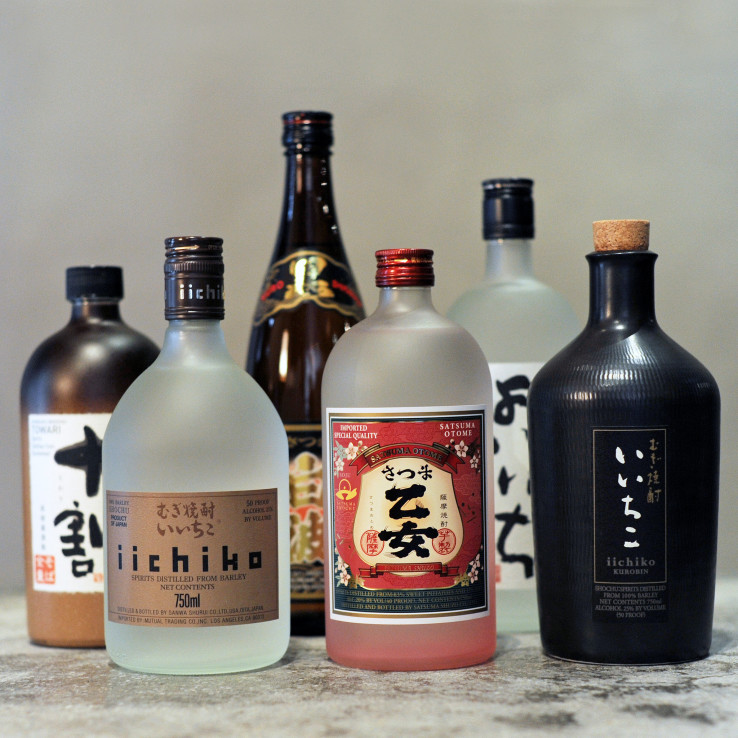Sommelier Talk: Episode 9 – Shochu
How to enjoy hot sake was the topic I covered in the last episode/article, but did you know that in some parts of Europe “hot wine” is being consumed during the cold Winter season? It’s called “Vin Chaud” in France, and “Gluhwein” in Germany. Wine is heated with spices like cinnamon and clove and with a sweetener, such as sugar or honey. The difference between hot sake and hot wine is that the latter is usually consumed alone as an after dinner drink. So, compared to other brewed beverages, sake is very unique and more versatile in terms of the serving temperatures, drinking seasons as well as the food pairings.
There is another unique beverage native to Japan called shochu (pronounced as “show-chew”). Shochu is a distilled spirit that is as versatile as sake. Shochu can be consumed warm by mixing with hot water, on the rocks, at room temperature, in a cocktail, and it can be enjoyed with various cuisines regardless of the season. Shochu is usually made from one of the following ingredients: rice, barley, sweet potato or sugarcane, and the flavor of shochu generally reflects the unique characteristics of the ingredient used. Because shochu can be used as a base for mixed drinks, its flavor profile is limitless. This is the reason shochu continues to stimulate consumer curiosity, and the sales of shochu keep increasing in Japan.
After having tried various distilled spirits at the Wine & Spirit Education Trust “Spirits Program”, I can say that Japan should be proud of its creation. Unlike other spirits, shochu is distilled with the use of koji mold to saccharify (converting starch into fermentable sugar) the ingredient. The craftsmanship in shochu distillery is rarely found in any other parts of the world. Through several shochu tasting events, I have come to realize that the strong aroma of some of the shochu products is not necessarily perceived as a bad thing by the American consumers who are used to having other distilled spirits as well as heavily flavored cuisines. It is surprising to find that there are many who prefer sweet potato shochu known for its strong character.
Lastly, I will explain how to properly prepare Oyuwari shochu (shochu mixed with hot water). You must always pour the hot water first in a glass. Why? Because the boiling temperature of alcohol is 80°C (176°F). So you can literally “burn” shochu by adding hot water that is above 80°C (176°F) into shochu, ultimately altering its flavor. You can reduce the temperature of water to below 80°C (176°F) by pouring it into a glass first. To avoid the glass from breaking by a sudden temperature change, running hot water through a cocktail stirrer to reduce the temperature of hot water is recommended.





Comments